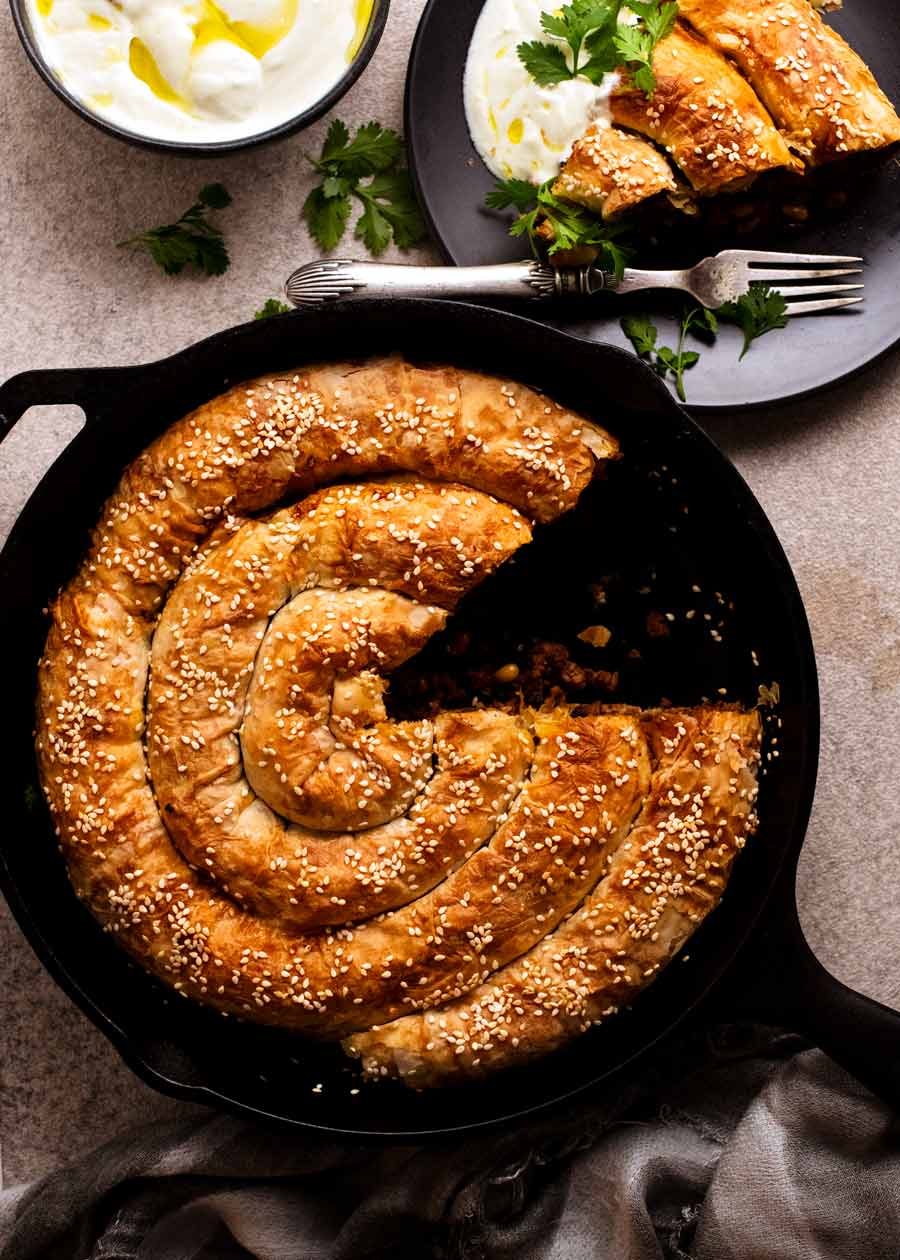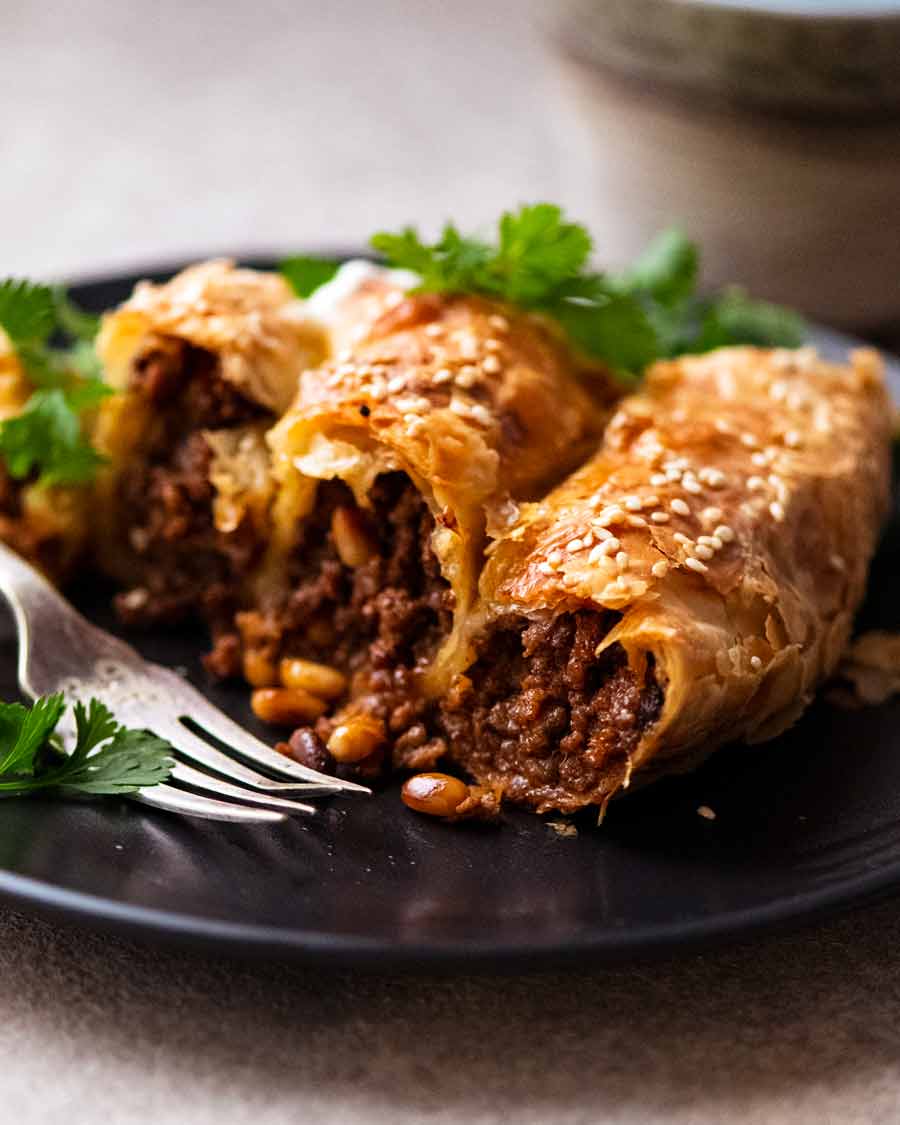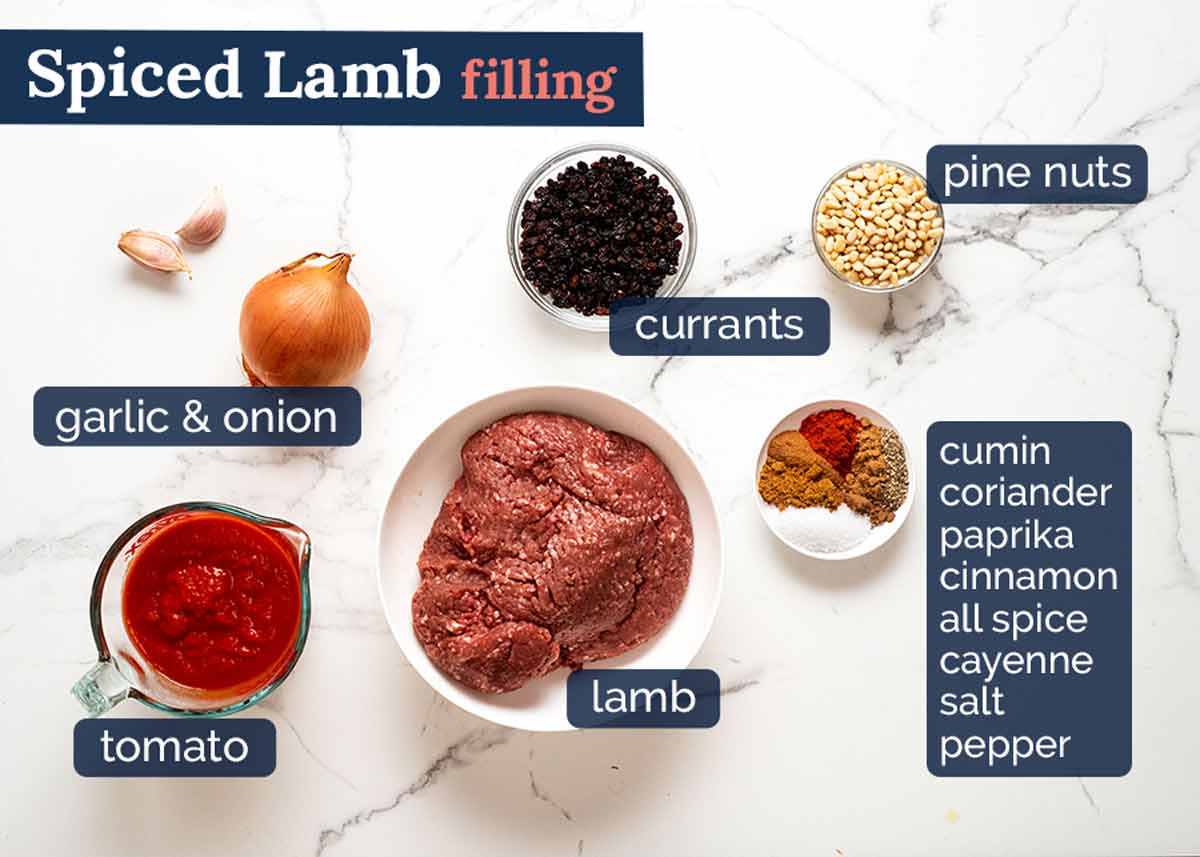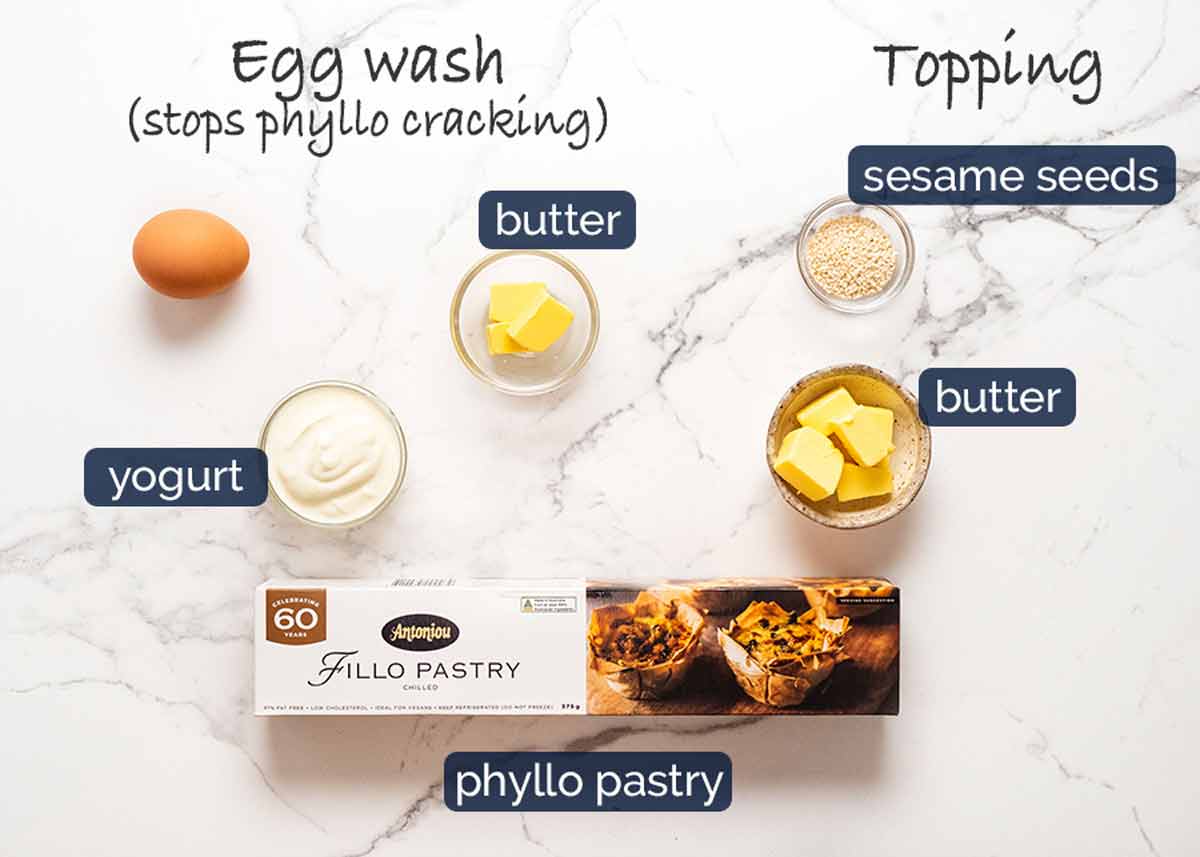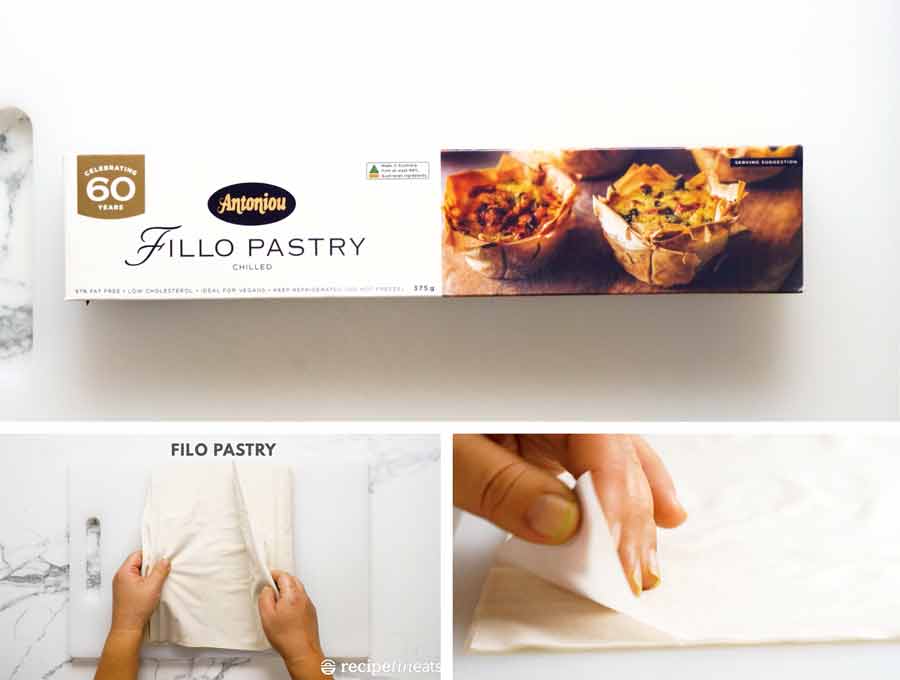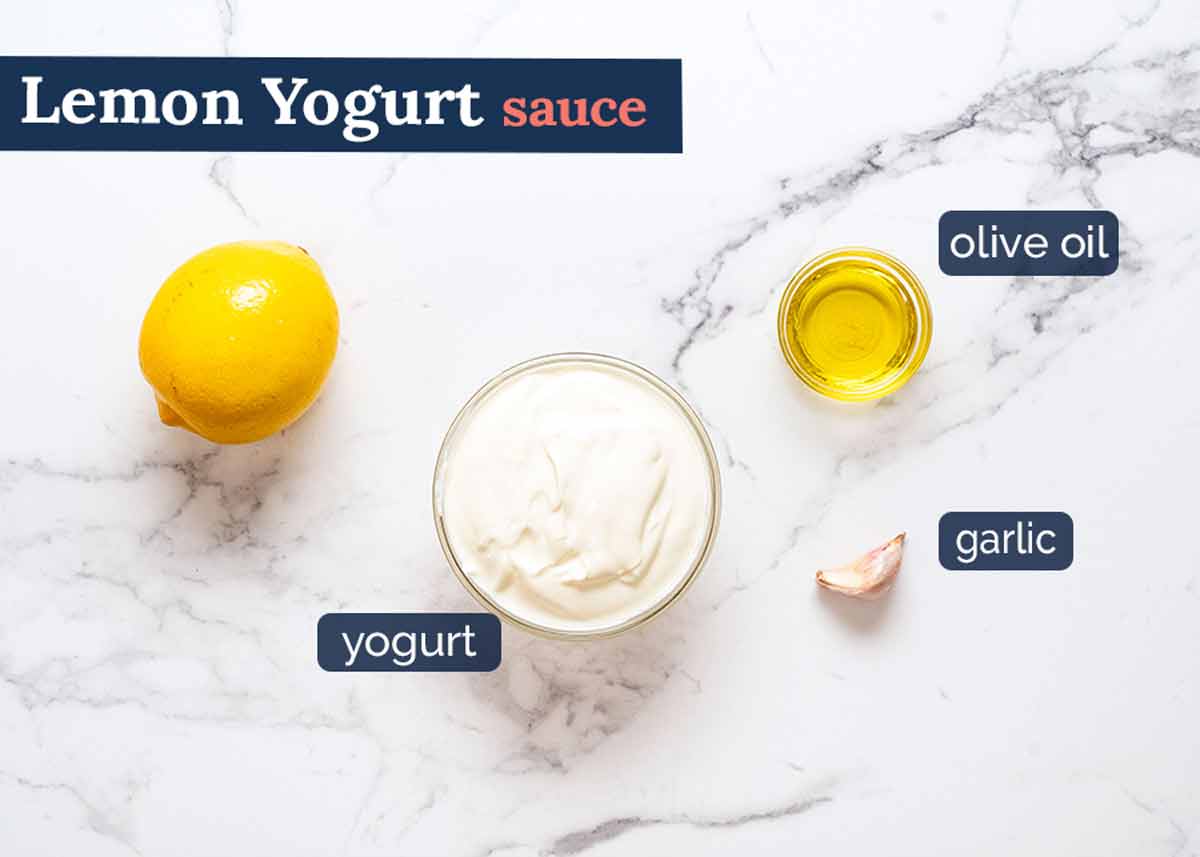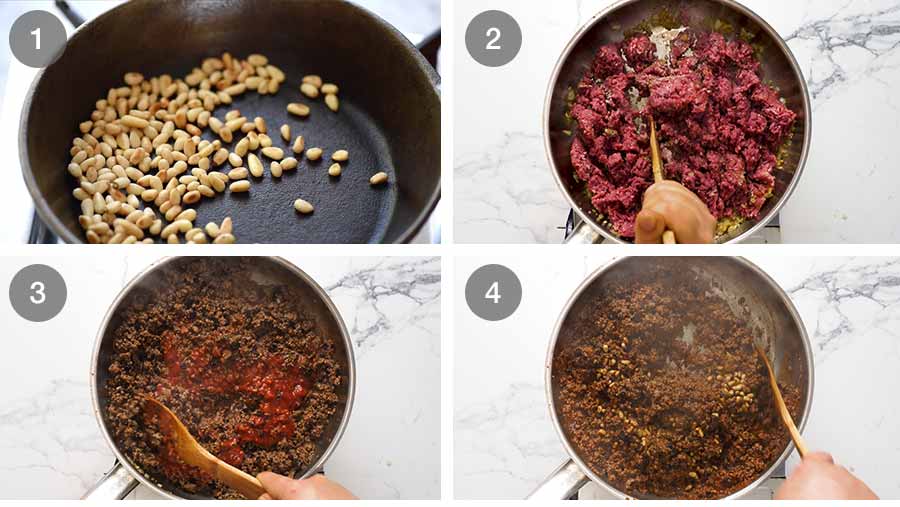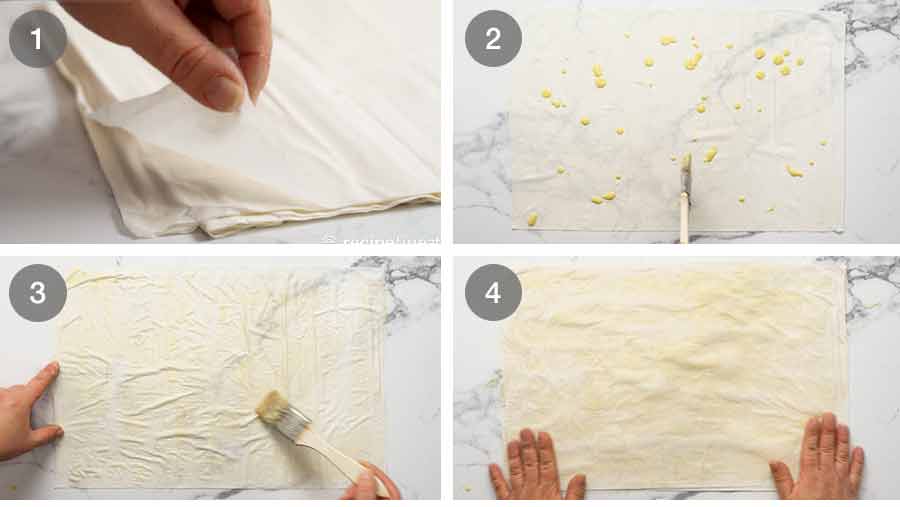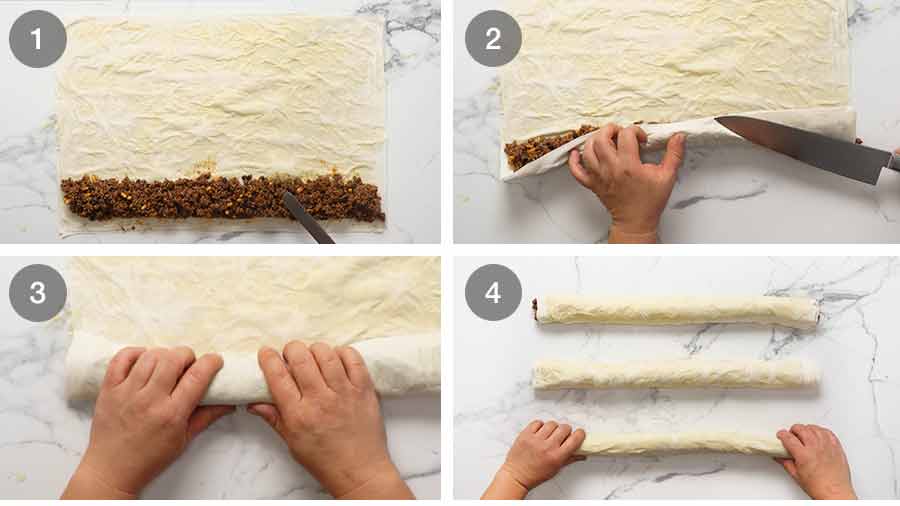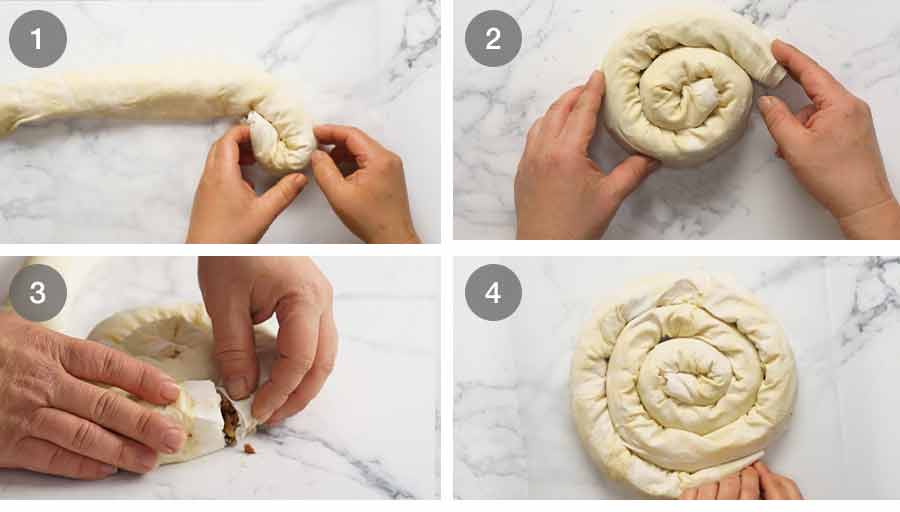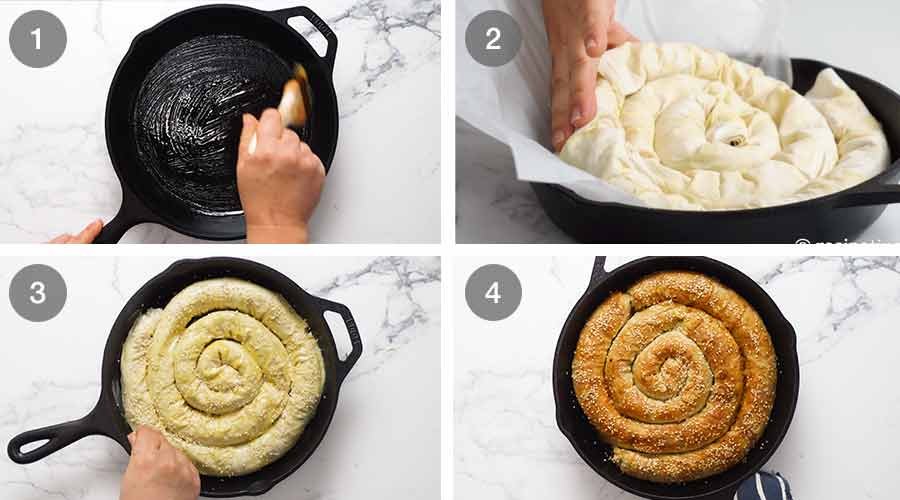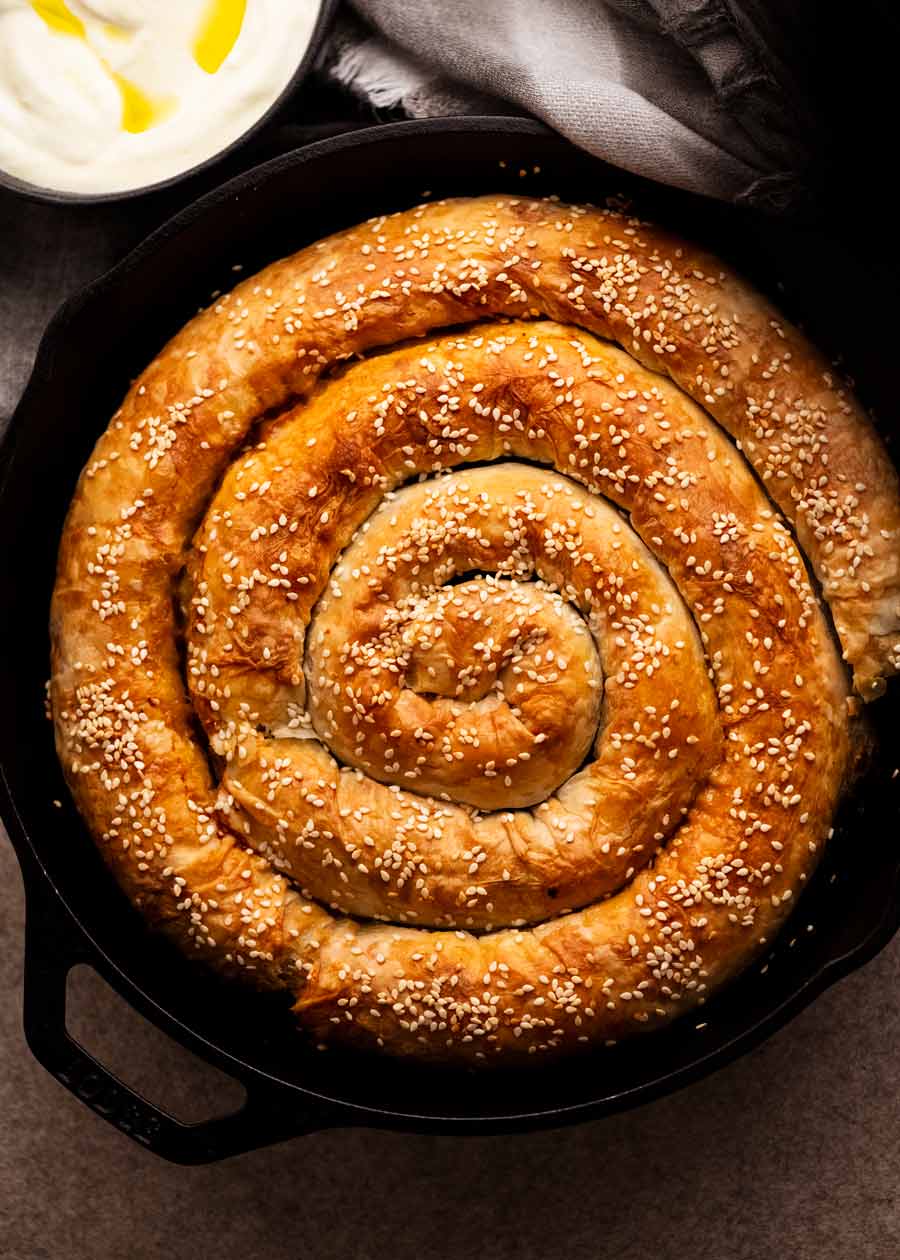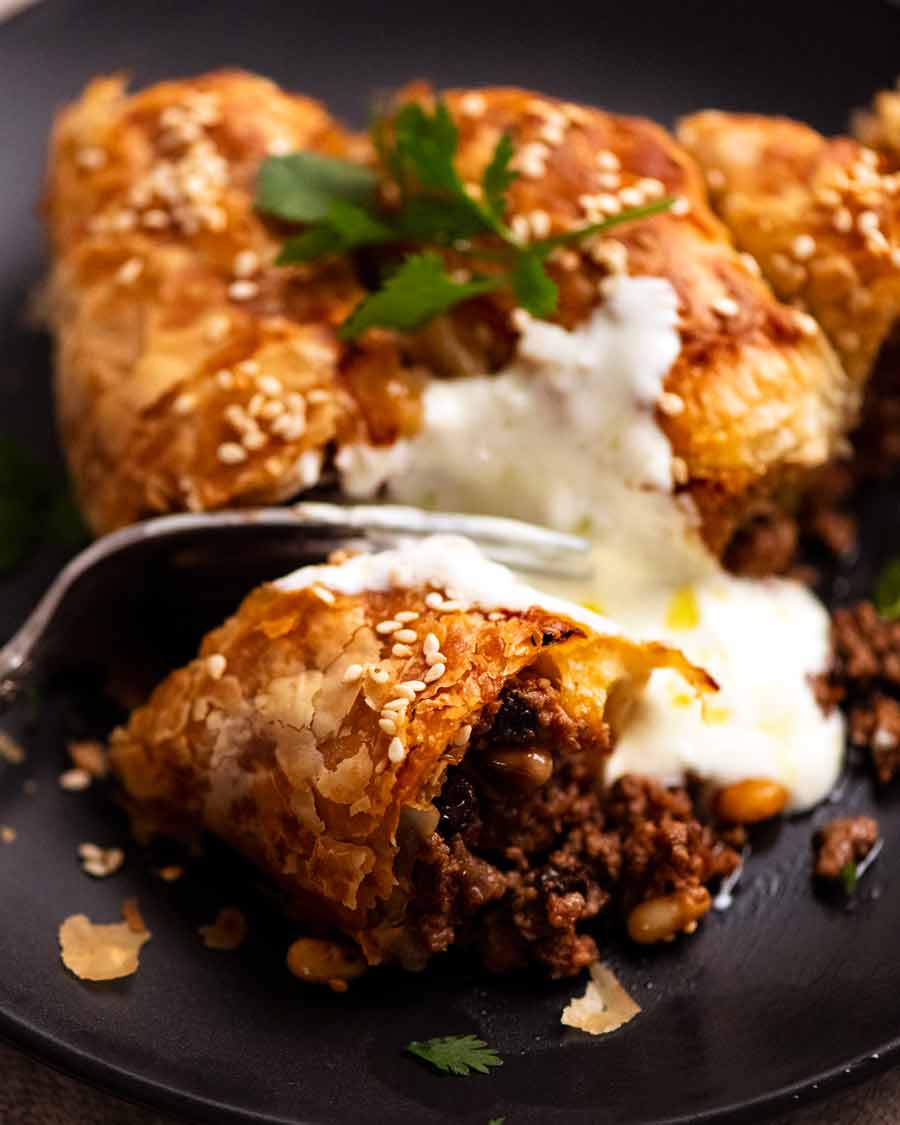Lamb Borek
Savoury pastries are hard to beat. It explains why pretty much every nation on earth seems to boast at least one kind they’re fiercely proud of. Borek is a pastry that gets so much love it can be found in not one but a swathe of countries, spanning the Balkans and Eastern Europe, Greece and Turkey, all the way to Armenia and North Africa – the Borek Belt! This deliciously flaky, baked pastry comes stuffed with different fillings. It might be meat, vegetables, potato, cheese or some combination. The shape also varies depending where it’s made. Sometimes they are flat pastries, sometimes a log shape and other times resemble a pie. Sometimes they also come in a charmingly rustic coil shape which is what I’ve chosen today. The filling for this one is Spiced Lamb. It’s a mince filling flavoured with an intoxicating mix of gentle spices, and studded with currants for sweet pops as well as pine nuts for a little nutty crunch. The smell that will waft through your house as they bake will make your mouth water, and leave you desperately battling the urge to stop at one mouthful as you’re “just checking for seasoning” … ! If you make this and this happens to you, tell me in the comments below so I know it’s not just me!!! 😂
What you need to make Lamb Borek
We can break this down into following parts:
1. Lamb filling ingredients
Notes on a few of the ingredients:
Lamb mince – Lamb is a protein often favoured in the parts of the world Borek is found. The rich and distinct flavour of lamb with the spices gives this Borek its signature flavour that will transport you to the streets of Istanbul or Belgrade … like back in those days when we could freely travel!Substitute with beef. The recipe will also work with chicken and turkey, but you’ll probably need to add a pinch more of each spice.Tomato passata – Pureed, strained tomatoes, sometimes labelled Tomato Puree in the US (here’s a photo of Mutti Tomato Passata sold at Walmart). Readily available in Australian supermarkets nowadays, alongside pasta sauces.Spice mix – All spices you can find at everyday super markets!Currants – This can be substituted with raisins or sultanas. If using these, they are best chopped as they are a little larger than currants.Pine nuts – These add that sweet, creamy nuttiness that you only get from pine nuts! Pistachios would make a nice alternative.
2. Borek assembling ingredients
Here’s what we need to assemble the borek: Substitute with beef. The recipe will also work with chicken and turkey, but you’ll probably need to add a pinch more of each spice.
Filo pastry (aka phyllo pastry) – See below for tips on handling.Yogurt egg wash – This is a mixture made with egg, butter and yoghurt that is brushed on each layer of filo to soften it so it doesn’t crack when rolled up into a coil. Having tried it with and without, even using a pliable refrigerated filo pastry (as opposed to the more brittle frozen-thawed variety), I can tell you that it’s absolutely necessary, it works, so do not skip it!Topping – Butter for brushing to make the pastry golden, and sesame seeds for a traditional finish!
Filo pastry for borek (aka phyllo pastry)
Borek is made with filo pastry, the paper thin pastry that is mostly used layered to get the signature flakiness. Also known as phyllo pastry, it is used to make both savoury and sweet pastries in Mediterranean and Middle Eastern cuisines, such as Baklava and Spanakopita. It comes frozen or fresh, in the fridge section of grocery stores. I recommend getting fresh filo. It’s more pliable and easier to work with. See below for more on this.
Part 3: Lemon Yoghurt Sauce
And lastly, here’s what we need for the lemon yoghurt sauce served with the borek:
Fridge (ie. fresh) filo pastry is easier to handle – It’s more pliable than frozen-then-thawed, so you don’t need to be as careful handling it. Find it in the fridge section of grocery stores, usually alongside fresh pasta;If using frozen filo pastry – Thaw overnight in the fridge. Never try to speed up thawing by placing in a warm environment. It dries the pastry out and makes it brittle so it tends to shatter;Take it out of the fridge 30 minutes beforehand – Whether using frozen thawed or fresh. Bringing it to room temperature makes it more pliable and therefore easier to handle;Keep the phyllo pastry covered with a slightly damp tea towel to ensure it doesn’t dry out; andHandle like tissue paper, ie. with fairy fingers. Don’t manhandle it like a slice of ham!
How to make Borek
This section is broken up into the following parts:
Part 1: Filling
Start with the filling first so it has time to cool while you prepare the other components. While the pastry is cooking, start preparing the other components. Cool – Once the filling is ready, remove the skillet from the stove and let it cool. Hot filling inside pastry will steam and make the pastry soggy, so cooling is essential!
Part 2: Yoghurt wash for filo pastry
As mentioned above, a simple egg, yoghurt and butter mixture lightly brushed on the surface of the filo pastry will stop it from cracking when you roll and coil the pastry. You will still have a crispy top because we only brush the yoghurt between the layers of filo. Indeed we will brush the top with butter to make the surface nice and crispy!
Part 3: Preparing filo layers
Just warm, not hot. If it’s too hot, it “melts” the filo pastry, making it sticky and difficult to work with.
Part 4: Fill and roll
Now, spiral-forming time!
Part 4: Making the Borek spiral
The trick to easily transfer the assembled Borek spiral into the baking vessel is to assemble it on paper and slide it in. So we’ll form the shape on a sheet of baking paper.
Part 4: Baking the Borek
Part 5: Serving borek
What to serve with Borek
Borek is good served hot, warm or even at room temperature. It makes a delicious snack or picnic food, but of course can happily star as a meal in itself! Look Ma, the filo pastry didn’t crack! That’s the yoghurt wash at work! Wa-hey! You can even free-form it on a baking tray because Borek will not spread when baking. Whatever you use for your baking vessel, brush it with melted butter so the borek doesn’t stick. It would be a crying shame if the pastry gets stuck to the skillet after all that work!! I tried a few methods for the transferring move, and this was by far the easiest. Don’t try assembling the spiral in the skillet – the delicate pastry will catch and tear on the oiled skillet as you slide it around to create the spiral. For the record, I also tried making one thick log instead of a spiral. This works just fine and looks impressive when you’re making it. But it does require a deft touch when rolling. You’d think it’s easier than a spiral but actually it’s harder because filo pastry is quite delicate! For this rich, meat-filled pastry, a fresh salad with crisp vegetables makes an ideal partner. Given the provenance of Borek, think Mediterranean or Middle Eastern and you can’t go wrong. Here are some on-theme suggestions, as well as some great all-rounders that work with “everything”:
Sides for Borek
Love to know if you try this…. tell me if you nail the spiral!! – Nagi x
Watch how to make it
Life of Dozer
This is how we celebrate birthdays at Team RecipeTin during lockdown – with goodie bags delivered to each team member for a virtual Zoom birthday party! Yes Dozer, the bag contains cake. (And cheese and crackers and champers and party poppers and party hats and sparklers and lolly bags!!!)
